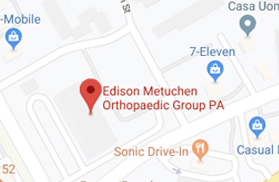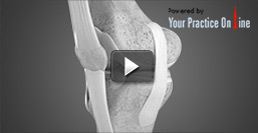Hand & Wrist
Normal Hand Anatomy
The hand in the human body is made up of the wrist, palm, and fingers. The most flexible part of the human skeleton, the hand enables us to perform many of our daily activities.
Find out more about Normal Hand Anatomy with the following links
Trigger Finger
The ability to bend the fingers is governed by supportive tendons that connect muscles to the bones of the fingers. The tendons run along the length of the bone and are kept in place at intervals by tunnels of ligaments called pulleys. When the fingers bend or are straightened, a slippery coating called tenosynovium helps the tendons smoothly glide through the ligaments with reduced friction.
Find out more about Trigger Finger with the following links
Ganglion cysts
Ganglion cysts are swellings that most commonly develop along the tendons or joints of wrists or hands. They can be found either at the top of the wrist, palm side of the wrist, end joint of a finger, or at the base of a finger.
Find out more about Ganglion cysts with the following links
Dupuytren’s Contracture
Dupuytren’s Contracture is a hand condition where thickening of the underlying fibrous tissues of the palm cause the fingers to bend inward. Patients with this condition are unable to fully straighten the affected fingers.
Find out more about Dupuytren’s Contracture with the following links
De Quervain’s Tenosynovitis
The muscles and bones of the hand are connected by thick flexible tissue called tendons. Tendons are covered by a thin soft sheath of tissue known as synovium. Extensor pollicis brevis and abductor pollicis longus are two tendons located on the thumb side of the wrist. Inflammation and swelling of the tendon sheaths puts pressure on the adjacent nerves and leads to pain and numbness in the thumb side of the wrist.
Find out more about De Quervain’s Tenosynovitis with the following links
Wrist Fracture
The wrist is comprised of two bones in the forearm, the radius and ulna, and eight tiny carpal bones in the palm. The bones meet to form multiple large and small joints. A wrist fracture refers to a break in one or more of these bones.
Find out more about Wrist Fracture with the following links
Arthroscopic Wrist Surgery
Your wrist is a complex joint made up of eight small bones called carpal bones. These bones are supported by connecting ligaments. Various conditions can affect your wrist joint such as carpal tunnel syndrome, osteoarthritis and others.
Find out more about with the following links
Wrist Joint Replacement
Wrist joint replacement surgery, also referred to as total wrist arthroplasty, involves replacement of a severe arthritic wrist joint with an artificial joint made of metal and plastic components. It relieves pain and restores function when conservative treatment fails to provide relief.
Find out more about Wrist Joint Replacement with the following links
Platelet Rich Plasma Therapy
Orthobiologics are substances naturally found in the body which are used to facilitate and accelerate the healing process of many types of orthopedic injuries and conditions. Platelet Rich Plasma Therapy is an orthobiologic solution for treating arthritis pain as well as ligament or tendon injuries when traditional methods have failed.
Find out more about Platelet Rich Plasma Therapy with the following link
Carpal Tunnel Release
The carpal tunnel is a narrow passageway on the palm side of your wrist. Small wrist bones known as carpals form the bottom and sides of your carpal tunnel and a strong band of connecting tissue, known as the transverse carpal ligament, covers the top of the carpal tunnel.
Find out more about Carpal Tunnel Release with the following link
Click on the topics below to find out more from the orthopedic connection website of American Academy of Orthopaedic Surgeons.
- Arthritis of the Hand
- Arthritis of the Wrist
- Boutonnière Deformity
- Dupuytren’s contracture
- Fracture of the finger
- Ganglions (cysts) of the Wrist
- Hand Fractures
- Trigger Finger
- Wrist Arthroscopy
- Wrist Sprains
- Wrist Joint Replacement (Arthroplasty)
- Carpal Tunnel Syndrome
- DeQuervain’s tendinitis
- Hand surgery
- Reflex sympathetic dystrophy
- Ulnar nerve entrapment
- Distal Radius Fracture (Colles’ Fracture)
- Scaphoid Fracture of the Wrist
 Menu
Menu






